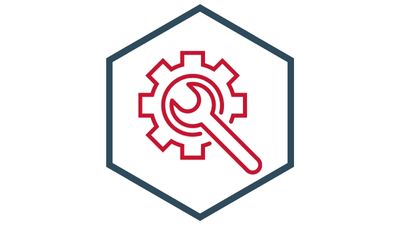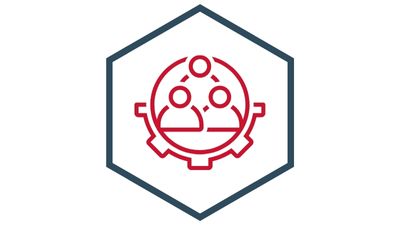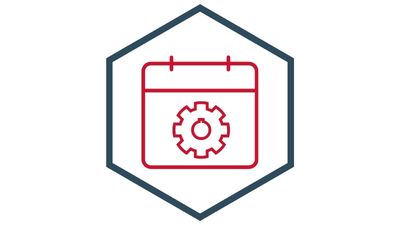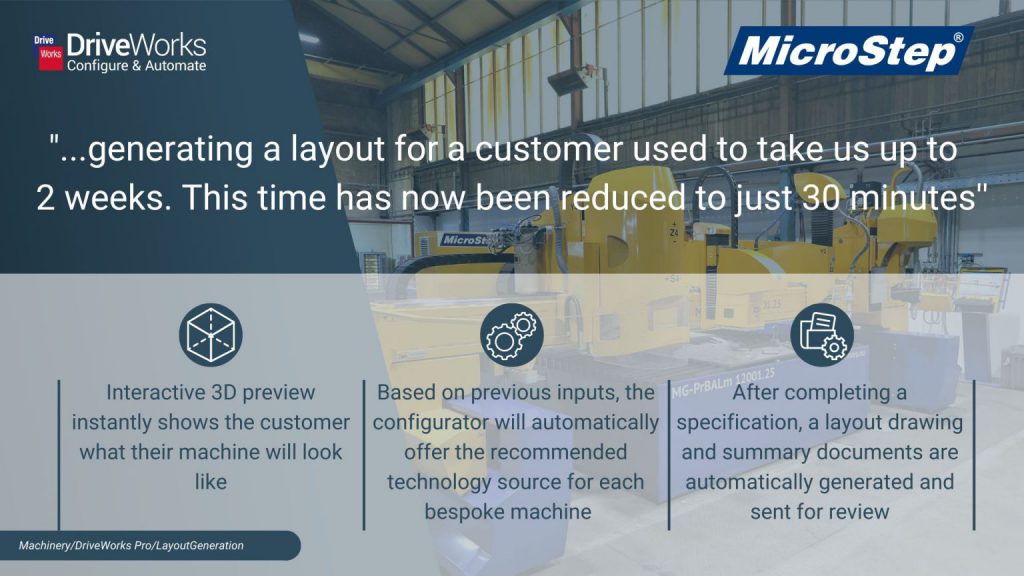
Understanding the Possibilities of Digital Technologies for the Future of Manufacturing
Technology is changing the way consumers and businesses research and buy products. With this comes the need for manufacturers to use technology to keep up with growing demand.
Technology enables manufacturers to design quicker, communicate better, and transform the customer experience.
Digital technologies enable more immersive buying experiences. Customers can make changes, personalize options and visualize their selections. Meanwhile, businesses can reduce design and production times by increasing efficiency and streamlining internal processes.
Digital technologies open up so many doors and the possibilities for what they can do for organizations are endless. As technology evolves, so should your business.

What is Digital Transformation?
Digital transformation is the adoption of digital technologies to create new or modify existing processes within an organization. Adopting digital technologies is enabling companies to:
- increase efficiency
- improve accuracy
- streamline business to consumer relations
- boost speed
- innovate
Digitalization doesn’t always look the same. For some, the answer may be as simple as replacing a paper document with an online spreadsheet. While for others, the goal may be to digitize every part of the organization. No matter the goal for digital transformation, the key is to pick a suitable strategy. One that suits your organization’s current aims, with the ability to scale when appropriate.
56% of CEOs say digital improvements have led to increased revenue. But it’s not just revenue that’s important, there are many more benefits of going digital.
Understanding the possibilities that digital technologies bring to manufacturers is key to mapping out how you can succeed with digital implementations. It helps businesses to stay ahead of their competition and improve traditional processes. Technology is driving the manufacturing industry forward.
The Benefits of Digital Transformation
The benefits of digital transformation can reach all corners of a business. Digital transformation is improving communication and promoting collaboration. Digital-focused companies are more agile, enabling growth. These benefits are resulting in increased efficiency, more productive workforces, and improved customer experiences.
Automating and digitizing internal business processes increases productivity and improves customer experiences. Teams who collaborate effectively are more productive. They have more time for creativity and adding value.
Digital processes make it easier for organizations to anticipate and adapt to changes. It also provides better planning opportunities, implementing and nurturing new strategies.
In the current climate, companies are looking for ways to do more with less, and technology is helping to do just that. Digital transformation results in fewer errors, a more productive workforce, reduced overhead costs, and more opportunities to make improvements. It allows mundane tasks to be automated, speeding up processes and increasing throughput.

Finding a Suitable Solution
The prospect of creating long-term goals to digitally transform can seem daunting. It’s important to remember you don’t have to make big changes all at once. Digital transformation is scalable. Sometimes, with what feels like a ‘big problem’, it can be easy to assume it needs a big solution, requiring a lot of time, money, and change. This doesn’t need to be the case.
It’s important to find an appropriate and achievable strategy. No matter the end goal, the key is to start small. Pick a strategy that suits your organization’s current aims, with the ability to scale when appropriate. It’s important to research and experiment, learning from, and building on, your successes.
Digital transformation is not one-size-fits-all. You can do as much, or as little as you like. Starting small is both cost-effective and low-risk. These things could feel like minor adjustments but they often pay off straight away – they are ‘quick wins’. Once you’ve identified these quick wins and started to see the changes paying off, you can build on this to do more. We take a closer look at the benefits of quick wins in another blog, Making Time for Digital Transformation.
Focus on what your goals are and act accordingly. It can be easy to become overwhelmed by the number of technology offerings and you run the risk of implementing initiatives that don’t solve current problems. Simplify current processes and then build on this.
Focusing on initial goals reduces the time and cost required to plan and implement the strategy and also helps with employee engagement. Small changes over a period of time are much easier to accept and adapt to. Breaking down the task makes it more attainable and there’s also a quicker sense of satisfaction. Seeing results sooner boosts attitudes towards digital transformation and increases adoption and acceptance.

What Does Digital Transformation Mean for Manufacturers?
Technology is versatile, meaning it can reach all areas of organizations in all sectors. Technology can be harnessed within manufacturing in countless ways, revolutionizing the way manufacturers do business. Digital advancements enable manufacturers to streamline innovation and production processes, right through to customer experience.
Sales and marketing teams could implement digital automated replies to sales inquiries. HR could improve onboarding with digital learning platforms like training videos. Engineering could implement design automation to save time and reduce errors. IT could speed up processes and access to resources with cloud-based tools. By turning to digital not only are you increasing the efficiency of production, but creating a workforce that is agile and adept at responding to new digital changes as we look to the future.
The benefits are also passed on to customers – with a faster order and delivery processes and more accurate end product. Better customer satisfaction results in more orders and more customer loyalty, retention and recommendations.
Automation is Changing Businesses
Technology is accelerating and markets are changing. Consumers want products faster, cheaper, and easier than ever before, without compromising on quality. This is putting pressure on manufacturers to deliver, so what does automation have to do with it all?
Design automation is enabling businesses to turn around proposals quickly, design and manufacture efficiently, and deliver on promises consistently, all whilst maintaining a healthy profit.
Automating business processes creates a more effective and efficient workforce. Valuable time saved can be used to innovate more and add value. Automation can help you:
- Make data-driven decisions
- Reduce errors
- Standardise
- Promote communication between teams
Through automation, complex business processes are being made smarter.
Business Process Automation is enabling businesses to become more streamlined. Automation uses information and data to manage routine processes, reduce errors and costs, increase productivity and improve efficiency. By using technology to automate key business processes, organizations are driving positive change and are already being rewarded.
Improving internal processes has a positive impact on customer experience too. A fast process with fewer errors saves time for you and the customer, whilst also building customer loyalty and retention.
By automating time-sensitive and often repetitive activities, businesses can do more with less, improving throughput and quality to meet customers’ requirements. Automation is freeing up engineers, enabling them to get through more orders in less time, and giving time to focus on improving product quality and developing new products if needed. Sales teams are becoming more proficient meaning customer inquiries are being dealt with faster and with better detail. Automation is leading to more orders, reduced operational overheads, and better customer service one step at a time.
Learning Digital Skills & Empowering Workforces is Key to Ensuring Digital Transformation Success
Investing in digital also means investing in your workforce. All teams can feel the benefits of digital transformation. Automating mundane, repetitive tasks and reducing errors improves job satisfaction. Using digital technologies frees up employees to be more productive, and focus on what humans do best – adding value. From sales and engineering, all the way to HR, there will be opportunities to streamline processes. This will change the way your business operates and improve customer experiences too.
Digital transformation is different for every company so it can be hard to pinpoint where to start and what to do. Adopting a team-by-team approach helps to break the task down, and find what’s appropriate for each team. Small steps add up. Each team could digitize one aspect of their workload, see the results and then build on this to do more.
Those embracing the change by learning and developing skills in digital are often better off in the long run.

Digital Transformation Isn’t All About Technology
The manufacturing industry has changed a lot over time, with most of its evolution taking place in recent years. Advances in technology have revolutionized the way manufacturers design their products. Businesses have been evaluating where digital can fit into their business. These changes can bring worry and concerns for the human workforce.
The fear of the unknown is sometimes too much, especially for those having to learn new skills. It can be easy to slip into an ‘if it isn’t broken don’t fix it’ mindset. Those who are comfortable with their current processes can be resistant to making changes and improvements.
Recognizing this fear amongst employees is the first step to helping them overcome it. Employers should explain how technology can make the day-to-day tasks of their employees easier. Human and digital workforces should work hand in hand, to make entire business systems work better. Acknowledging fears can make employees feel valued and listened to.
One of the biggest misconceptions about digital transformation is the idea that absolutely everything will change all at once, and that workforces will have to adapt quickly to an entirely new way of working. It is important to support the learning and development of employees through times of change and think about what is best for the company overall. You can read more about helping to eliminate the fears of digital transformation here.

Planning for Digital Transformation
By starting small, businesses can grow with their technology, develop learning, and see a return on investment. Solving some of the identified problems little by little contributes to an overall payoff. Building solutions incrementally with small gains is highly beneficial to the entire process.
Setting achievable targets will help your business to implement digital transformation at your own pace, and review productivity at each step. This benefits a longer-term strategy and enables you to embrace new opportunities quicker and see benefits sooner.
91% of companies have adopted a “digital first” business strategy. Businesses are taking the opportunity to invest in the future of their enterprise. By keeping up with technology, they are creating an easier transition to a more digital future, making themselves more agile. This technological agility allows for the ability to keep pace with growing customer needs and demand.
Learning Through Networking
Embracing technology can bring so many benefits to manufacturers but sometimes it can be hard to know what is the best fit for you.
Where do I start? How much will this cost? How will this affect my workforce? Am I taking too much of a risk?
Connecting with other businesses can be a useful way of learning from others, sharing knowledge and exchanging ideas. Building a strong network can provide you with an extra resource library. It can be a useful tool for you to learn from different perspectives and experiences.
There are many benefits to forming a strong business network. By building trust with people from different companies, industries, and backgrounds, you are creating a pool of resources. Speaking with your network can help problem solve, innovate and give you a boost in confidence.
If you chat to someone who has successfully implemented a digital transformation in their business, it is more likely to give you the confidence and knowledge to move forward with yours.
It’s never too late to improve any process. It’s important to remember you don’t have to make big changes all at once. There are many ways to see how digital could benefit your organization.
There may be new technologies you had not heard of, or a better solution to your problem you had not considered. Networking can also be useful to learn what not to do.
Looking at what other businesses are doing and learning from them is a good place to start. You can do this at industry trade shows or networking events. Events like DriveWorks World are a great way of making connections and learning from other businesses and their journeys.
You can also begin with free trials, like the DriveWorks Solo 30 Day Free Trial to see and use the capabilities, get a head start with set up and learn how the software will work for you.
Understanding the possibilities that technology can have to help you be more efficient, identifying opportunities for improvement, and adopting better processes builds a solid foundation for your organization’s future.

Jake Lawley
Systems Team Manager, DriveWorks
“Technology gives manufacturing organisations the capability to sell their products digitally. Selling digitally is a keystone of digital transformation for our customers at DriveWorks. But automation and digitalisation are not initiatives exclusively for the manufacturing and sales department.
Within our organisation, we have put the ethos of automation and digitalisation into every single department and team. We are using our own product, DriveWorks Pro, to automate and create workflows for managing HR records, sales data, analysing CRM data and much more!
Digital data and automation should be a boundless exercise across an entire organisation.”

MicroStep, headquartered in Slovakia, is a renowned manufacturer of CNC cutting machines, tailor-made for industries around the world. With a large portfolio of products and a high volume of orders, it is not easy to deliver customized layout drawings for all the different kinds of machine quotes.
Since implementing DriveWorks, MicroStep has benefitted by:
- Reducing their design time dramatically, from 2 weeks to just 30 minutes
- Adding a configurator to be used by their sales team, improving customer experience
- Automated document generation for all teams and customer
Find out more about how MicroStep is automating with DriveWorks here.